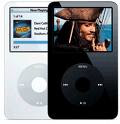
The first machine patented in the United States that showed animated pictures or movies was a device called the "wheel of life" or "zoopraxiscope". Patented in 1867 by William Lincoln, moving drawings or photographs were watched through a slit in the zoopraxiscope. However, this was a far cry from motion pictures as we know them today. Modern motion picture making began with the invention of the motion picture camera.
The Frenchman Louis Lumiere is often credited as inventing the first motion picture camera in 1895. But in truth, several others had made similar inventions around the same time as Lumiere. What Lumiere invented was a portable motion-picture camera, film processing unit and projector called the Cinematographe, three functions covered in one invention.
The Cinematographe made motion pictures very popular, and it could be better be said that Lumiere's invention began the motion picture era. In 1895, Lumiere and his brother were the first to present projected, moving, photographic, pictures to a paying audience of more that one person.
The Lumiere brothers were not the first to project film. In 1891, the Edison company successfully demonstrated the Kinetoscope, which enabled one person at a time to view moving pictures. Later in 1896, Edison showed his improved Vitascope projector and it was the first commercially, successful, projector in the U.S..
"The cinema is an invention without a future" - Louis Lumière
General History of Cinema - Motion Pictures - The Inventors in Cinema General essay on cinema inventors. Also see Early Cinema - History of Cinematography from 500 BC! From 1800 to 1850 covers early photography and from 1850 to 1900 early attempts at "moving photography" - Film History by Decade Chronology of film's history, both the technology and the artistry. - Animated Gif: Shadow the Magnificent This film estimated to be from 1896 or 1897 is one of the earliest projected films. - History of Motion Picture Sound 1910-1929 - Motion Picture Loudspeakers
Motion Picture Innovators
Eadweard MuybridgeSan Francisco photographer, Eadweard Muybridge conducted motion-sequence still photographic experiments and is called the "Father of the motion picture" even though he did not make films in the manner we know them as today.
Thomas Edison
The Frenchman Louis Lumiere is often credited as inventing the first motion picture camera in 1895. But in truth, several others had made similar inventions around the same time as Lumiere. What Lumiere invented was a portable motion-picture camera, film processing unit and projector called the Cinematographe, three functions covered in one invention.
The Cinematographe made motion pictures very popular, and it could be better be said that Lumiere's invention began the motion picture era. In 1895, Lumiere and his brother were the first to present projected, moving, photographic, pictures to a paying audience of more that one person.
The Lumiere brothers were not the first to project film. In 1891, the Edison company successfully demonstrated the Kinetoscope, which enabled one person at a time to view moving pictures. Later in 1896, Edison showed his improved Vitascope projector and it was the first commercially, successful, projector in the U.S..
"The cinema is an invention without a future" - Louis Lumière
General History of Cinema - Motion Pictures - The Inventors in Cinema General essay on cinema inventors. Also see Early Cinema - History of Cinematography from 500 BC! From 1800 to 1850 covers early photography and from 1850 to 1900 early attempts at "moving photography" - Film History by Decade Chronology of film's history, both the technology and the artistry. - Animated Gif: Shadow the Magnificent This film estimated to be from 1896 or 1897 is one of the earliest projected films. - History of Motion Picture Sound 1910-1929 - Motion Picture Loudspeakers
Motion Picture Innovators
Eadweard MuybridgeSan Francisco photographer, Eadweard Muybridge conducted motion-sequence still photographic experiments and is called the "Father of the motion picture" even though he did not make films in the manner we know them as today.
Thomas Edison
Thomas Edison's interest in motion pictures began before 1888, however, the visit of Eadweard Muybridge to the inventor's laboratory in West Orange in February of that year certainly stimulated Edison's resolve to invent a motion picture camera. - History of Edison Motion PicturesOrigins of motion pictures, the Kinetoscope, and Edison Motion Pictures.
Lumiere Brothers - The Lumiere Brothers Inventors of the cinematographic process.
History of Film Stock - One Hundred Years of Film Sizes Whereas film equipment has undergone drastic changes in the course, 35 mm has remained the universally accepted film size. We owe the format to a great extent to Edison (see photo) - in fact 35 mm was once called the Edison size. - Chronology of Eastman Kodak Motion Picture Film In 1889, the first commercial transparent roll film, perfected by Eastman and his research chemist, was put on the market. The availability of this flexible film made possible the development of Thomas Edison's motion picture camera in 1891. - Ancient photo & film In 1904, the brothers Auguste and Louis Lumiere patented the fist commercially successful color photography process - simple good essay, nicely illustrated. - History of sub-35 mm Film Formats Edison and Lumiere brothers discussed, lots of illustrations, easy to understand essay.
History of the Motion Picture CamerasColorization - Film Colorization Invented by Canadians Wilson Markle and Brian Hunt in 1983.
Animation Mickey Mouse's official birthday is November 18, 1928 when he made his first film debut in Steamboat Willie. This was the first Mickey Mouse cartoon released. However, the first Mickey Mouse Cartoon ever made was Plane Crazy in 1928, it was the third cartoon released. Walt Disney invented Mickey Mouse and the multi-plane camera.
Theaters - The Drive-In (ventor) Richard M. Hollingshead patented and opened the first drive-in theater. - The IMax Movie System The IMAX system has its roots in EXPO '67 in Montreal, Canada, where multi-screen films were the hit of the fair. A small group of Canadian filmmakers/entrepreneurs (Graeme Ferguson, Roman Kroitor and Robert Kerr), who had made some of those popular films, decided to design a new system using a single, powerful projector, rather than the cumbersome multiple projectors used at that time.
Lumiere Brothers - The Lumiere Brothers Inventors of the cinematographic process.
History of Film Stock - One Hundred Years of Film Sizes Whereas film equipment has undergone drastic changes in the course, 35 mm has remained the universally accepted film size. We owe the format to a great extent to Edison (see photo) - in fact 35 mm was once called the Edison size. - Chronology of Eastman Kodak Motion Picture Film In 1889, the first commercial transparent roll film, perfected by Eastman and his research chemist, was put on the market. The availability of this flexible film made possible the development of Thomas Edison's motion picture camera in 1891. - Ancient photo & film In 1904, the brothers Auguste and Louis Lumiere patented the fist commercially successful color photography process - simple good essay, nicely illustrated. - History of sub-35 mm Film Formats Edison and Lumiere brothers discussed, lots of illustrations, easy to understand essay.
History of the Motion Picture CamerasColorization - Film Colorization Invented by Canadians Wilson Markle and Brian Hunt in 1983.
Animation Mickey Mouse's official birthday is November 18, 1928 when he made his first film debut in Steamboat Willie. This was the first Mickey Mouse cartoon released. However, the first Mickey Mouse Cartoon ever made was Plane Crazy in 1928, it was the third cartoon released. Walt Disney invented Mickey Mouse and the multi-plane camera.
Theaters - The Drive-In (ventor) Richard M. Hollingshead patented and opened the first drive-in theater. - The IMax Movie System The IMAX system has its roots in EXPO '67 in Montreal, Canada, where multi-screen films were the hit of the fair. A small group of Canadian filmmakers/entrepreneurs (Graeme Ferguson, Roman Kroitor and Robert Kerr), who had made some of those popular films, decided to design a new system using a single, powerful projector, rather than the cumbersome multiple projectors used at that time.





























